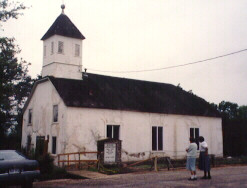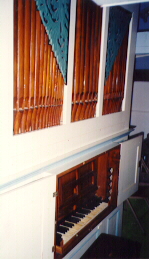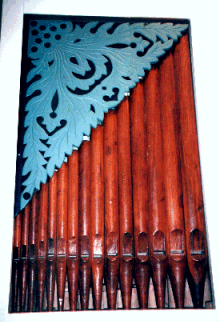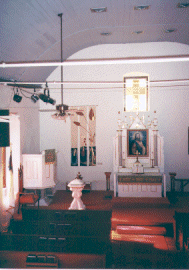Wandke's Texas Organs
Today, we sound a note of beauty in a harsh land. The University of Houston's College of Engineering presents this series about the machines that make our civilization run, and the people whose ingenuity created them.
Traugott Wandke got off the sailing ship Weser in Galveston. It was May 4th, 1855. Wandke was 47 years old. He'd spent two months crossing from Bremen, Germany. Now he was tired, seasick, and ready to head inland to begin a new life. That life would eventually settle down in Round Top, Texas.
He brought considerable mechanical skill to this primitive land. He went to work making church furniture and repairing watches. He did carpentry, tinsmithing, and locksmithing.
Wandke also had some modest ability as a musician. He brought with him an obscure book of German chorales. He could play most of them but not much else. He sang in his church choir. Old-timers from Round Top said he would walk through town singing a single sustained high note. They said it was a high G.
Then, in his mid-50s, Wandke began work on an organ for the Bethlehem Lutheran church. There's no hard evidence that he'd ever built an organ before. He might have. But it was common for the people who shaped life in our wilderness to do it without the expertise you'd expect. And, in 1865, Round Top lay on the very edge of the American frontier.
Before his death in 1870, Wandke built seven pipe organs from scratch. It's amazing how well he did at it. Three are around and the Bethlehem Church organ is still in use. So let's look at these old engines of Wandke's ingenuity.
The organs were beautifully made. They're self-contained units in fine wood cabinets. Wandke put them together with hand-turned wooden screws. He made the pipes from hand-planed wood. His organs are typically about ten feet high and six feet wide. Most of the wood in them is local cedar. They still perfume rooms with a delicate cedar smell.
The level of craftsmanship is remarkable. These are no historical curiosities. They're nice, playable instruments. They have a gentle, mellow sound. The voicing is uniform and musical. The action is good.
Yet they're idiosyncratic. They're the work of a man separated from the organ-building practice of his day. One modern builder points out that the design and the list of organ stops were 50 years out of date, even in 1865.
So that's how the first organs were built in Texas. This was a hard and barren land. The first order of business was to bring some beauty into it -- to make it bearable. That's what Wandke did. That's what fired his technological genius. But then, beauty has always been the first business of any technology, in any age.
I'm John Lienhard, at the University of Houston, where we're interested in the way inventive minds work.
(Theme music)
Frank, G.D., The Life and Work of Johann Traugott Wandke. Harrisville, NH, The Boston Organ Club Chapter of the Organ Historical Society, 1990.
I am grateful to Pat Bozeman, Head of Special Collections at the UH Library, for bringing the Frank book to my attention and for her counsel on this episode. I am also grateful to organist Larry Hamm, who plays the Bethlehem Church organ, for pointing out that Wandke was probably just trying to remember the high G on the way from his workshop to the church so he could tune the organ to it.

Photo by John Lienhard
Bethlehem Lutheran Church, Round Top, Texas

Photo by John Lienhard
First Organ Built in Texas by J. Traugott Wandke

Photo by Judy Myers
Front Pipes of Wandke's Organ, Right-Hand Side

Photo by Judy Myers
The Stop Action Mechanisms for Wandke's Organ

Photo by Judy Myers
Interior of the Bethlehem lutheran Church